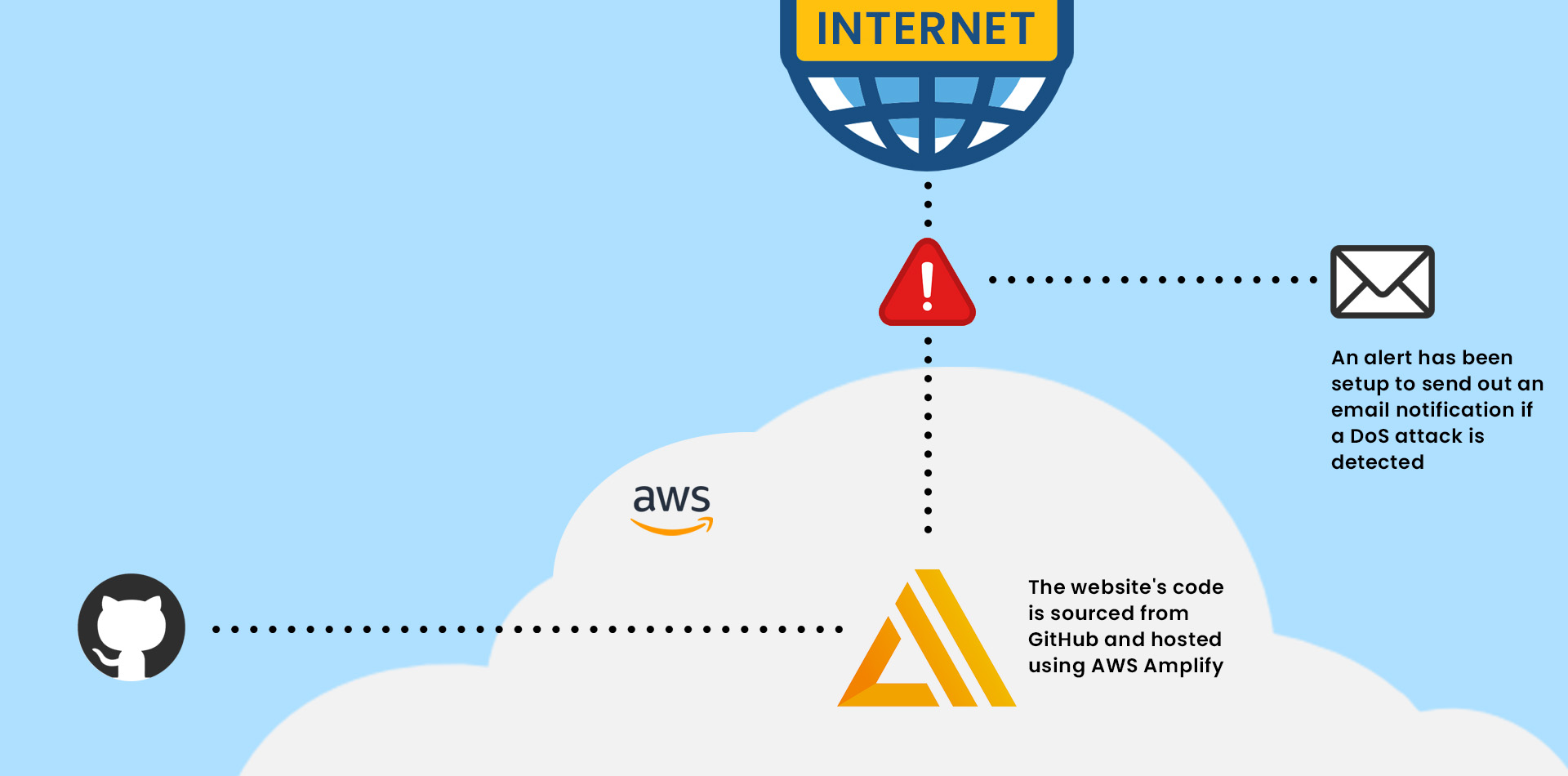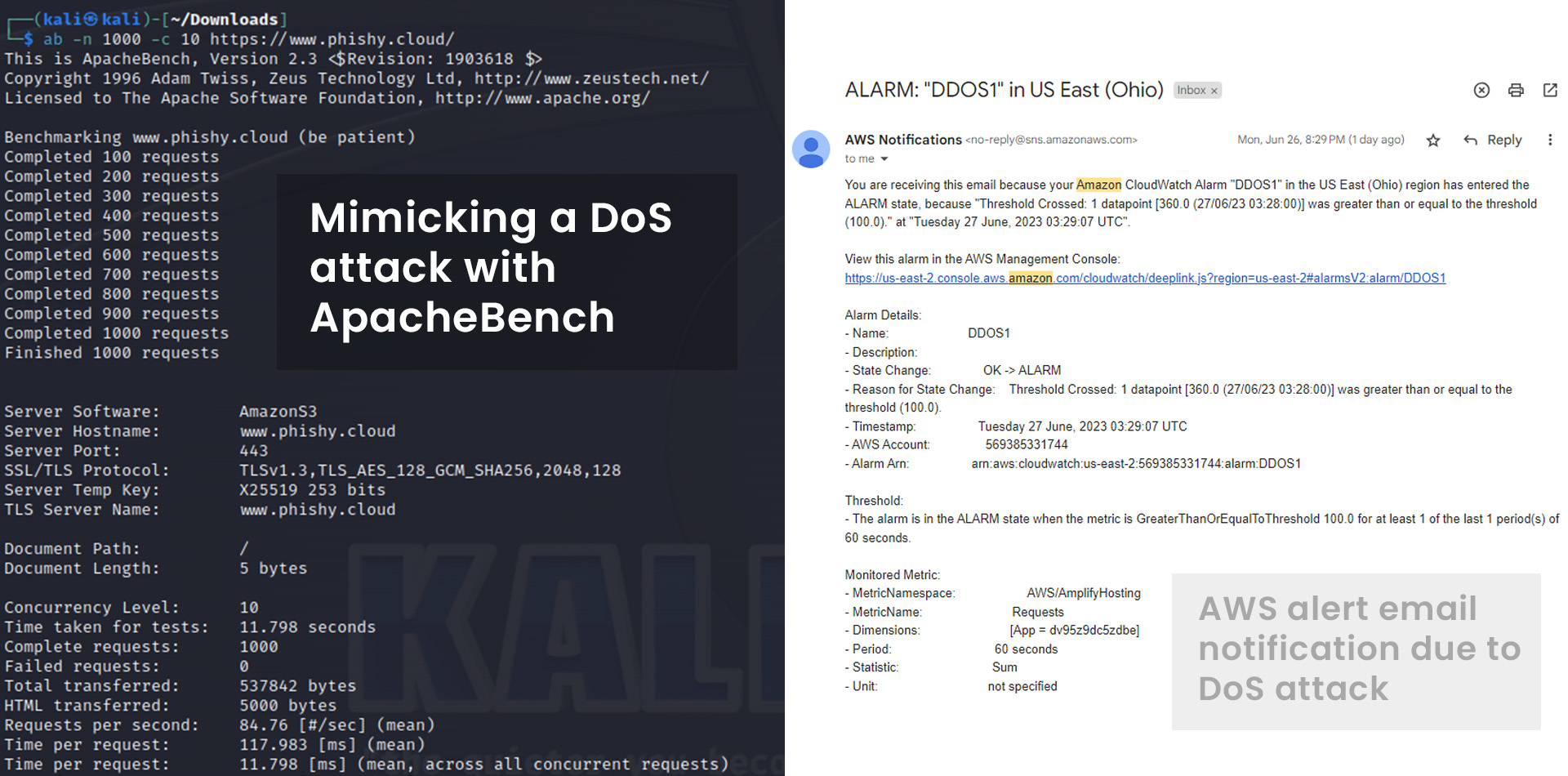Objective
Host a personal cybersecurity website using GitHub and AWS, and implement a Denial of Service (DoS) attack alert system.
Introduction
Phishy.Cloud was created as a platform to showcase my cybersecurity and cloud projects. To make it accessible and secure, I decided to leverage GitHub and AWS services. This project outlines the process of hosting the website using GitHub, deploying it on AWS Amplify, and implementing an email alert system for detecting DoS attacks.

Tools & Technologies Used
GitHub, AWS Amplify, AWS CloudWatch, ApacheBench (ab), Bash, Linux, DNS, VPN, HTML/CSS, JavaScript
Implementation
1. Website Content and GitHub:
I created and uploaded the website files to GitHub, ensuring that the content properly represented my cybersecurity and cloud projects.
2. AWS Account and Amplify:
I signed up for an AWS account and utilized AWS Amplify to connect to my GitHub repository. This integration allowed me to seamlessly deploy and host the website on AWS infrastructure.
3. DNS Configuration:
To point the Phishy.Cloud domain to AWS, I updated the DNS settings in the Google Domain Manager to route traffic to the AWS Amplify hosting.
4. DOS Alert Setup:
Defining what constitutes a DoS attack, I configured an alert system using AWS CloudWatch. This involved setting appropriate metrics and thresholds to trigger an alert when suspicious traffic patterns resembling a DoS attack were detected.
5. Testing the DOS Alert:
I installed ApacheBench (ab) on my virtual machine (VM) and performed a load test on the Phishy.Cloud website to simulate a DoS attack. This allowed me to verify the effectiveness of the alert system.
6. Alert Notification:
As expected, AWS CloudWatch generated an email notification and displayed the alert in the CloudWatch dashboard. This confirmed that the DoS alert system was successfully detecting and responding to potential attacks.

Challenges & Lessons Learned
Throughout the implementation process, I faced a few challenges while working with AWS. However, I discovered that AWS offers extensive resources and documentation that proved invaluable in navigating these obstacles. The official documentation provided a solid foundation, while external sources and internet searches offered additional insights and guidance, enhancing my understanding of the AWS ecosystem.
Conclusion
By hosting my personal cybersecurity website using GitHub and AWS services, I gained valuable insights into the capabilities offered by AWS for hosting websites and applications. This case study provided hands-on experience with GitHub integration, AWS Amplify deployment, and the implementation of a DoS alert system.
Moving forward, the next steps include setting up a Web Application Firewall (WAF) in AWS and configuring custom rules to automatically block IP addresses involved in DoS/DDoS attacks or brute force logins. This will further enhance the security and resilience of Phishy.Cloud against potential threats.


